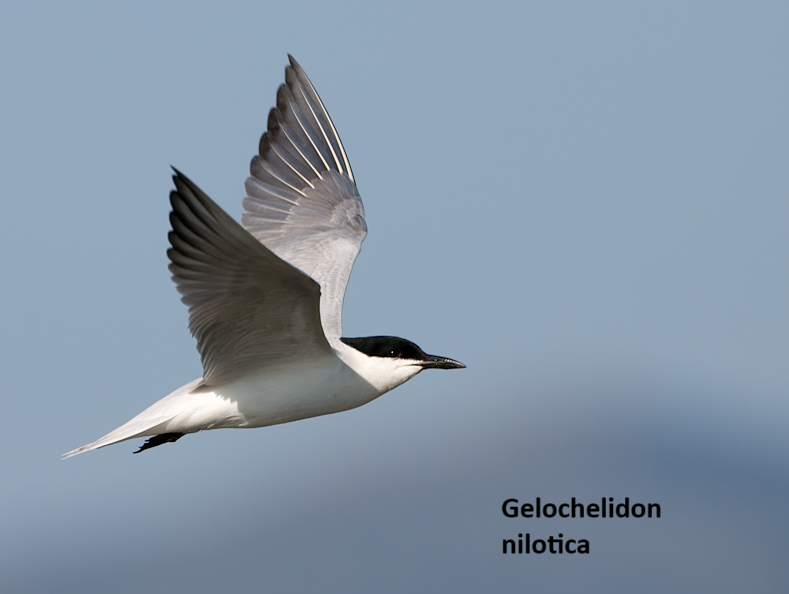Introduction
Gelochelidon nilotica, commonly known as the gull-billed tern, is a striking and versatile seabird found across many parts of the world. It stands out not only for its distinctive appearance but also for its diverse range of behaviors, habitat choices, and feeding strategies. As a member of the Laridae family, this tern exhibits several atypical traits that distinguish it from its more ocean-bound relatives.
With its short, thick bill and agile flight, Gelochelidon nilotica adapts remarkably well to various ecological settings. Its widespread distribution—from Europe and Asia to the Americas and Australia—makes it an intriguing subject for ornithologists and bird enthusiasts alike. This article explores what makes the gull-billed tern unique, including its distribution, habitat, behavior, and role in its ecosystem.
What is Gelochelidon nilotica?
Gelochelidon nilotica is a medium-sized tern characterized by a strong, black, gull-like bill, broad wings, and a short tail. The name “gull-billed” refers to its robust beak, which resembles that of gulls more than that of other terns. Adults usually display white underparts with pale grey wings and a black cap during the breeding season.
First described by Carl Linnaeus in 1758, this bird has undergone various taxonomic reclassifications. Originally placed in the genus Sterna, it now resides in the genus Gelochelidon. It is listed under the Least Concern category by the IUCN, yet regional populations can be sensitive to habitat disturbances.
Distribution and Habitat
Gelochelidon nilotica enjoys a broad geographical range that spans multiple continents. Its breeding grounds are typically located in temperate and subtropical regions, while wintering habitats are found in tropical areas.
Global Distribution
Europe and Asia
The gull-billed tern lays eggs and raises its young in places like southern and eastern Europe, central Asia, and parts of Russia during the breeding season.
Africa and the Middle East
In the colder months, these birds migrate to warmer regions, spending the winter along coasts and wetland areas across Africa and the Middle East.
North and South America
They are commonly seen along warm coastal areas like the Gulf of Mexico, the Caribbean islands, and some regions in South America.
Australia and Southeast Asia
Though they don’t breed here, gull-billed terns often visit these areas during migration or the non-breeding season.
Preferred Habitats
Unlike many other terns that rely heavily on marine environments, Gelochelidon nilotica prefers inland wetlands, salt pans, marshes, estuaries, river deltas, and even agricultural fields. During migration, they can also be spotted along coastal mudflats and lagoons.
The gull-billed tern chooses breeding sites on open sandy or muddy flats, often on small islands or near large lakes and rivers. These birds prefer sites with minimal vegetation to avoid predators and to facilitate easy takeoffs.
Behaviour and Ecology
The behavior and ecology of Gelochelidon nilotica are notably different from other members of the tern family. Its foraging methods, nesting strategies, and migratory patterns all exhibit adaptability and resourcefulness.
Feeding Behavior
Unlike most terns that dive into water for fish, Gelochelidon nilotica hunts primarily by hawking insects in mid-air or picking prey from the ground. Its diet includes:
-
Insects (beetles, grasshoppers)
-
Amphibians
-
Small mammals
-
Crustaceans
-
Occasionally, small fish or bird chicks
Its hunting style is more reminiscent of swallows or even small raptors, showing remarkable agility and speed during flight.
Breeding and Nesting
Breeding occurs from April to July, depending on the region. These birds are colonial nesters, forming small to moderate-sized colonies. The nest is a shallow scrape in sand or soil, often unlined. Clutch size is typically 2 to 3 eggs, which are speckled to blend with the ground.
Both parents participate in incubation, which lasts about 22–25 days, and in feeding the chicks after hatching. Chicks are semi-precocial, meaning they can move around shortly after birth but still depend on parents for food and protection.
Migration and Movement
Gelochelidon nilotica is a long-distance migrant, often traveling thousands of kilometers between breeding and wintering grounds. Migration is usually solitary or in small groups, and routes often follow major river systems or coastlines.
Conservation Status and Threats
Despite its global population being considered stable, Gelochelidon nilotica faces localized threats such as:
Habitat destruction from agriculture or urban development
This means natural areas where the birds live are being cleared or changed for farming or building cities, leaving the birds with fewer safe places to nest and feed.
Disturbance at nesting sites due to tourism or recreational use
People visiting or using areas near bird nests (like beaches or wetlands) can scare the birds away, damage their nests, or cause them to abandon their eggs or chicks.
Pollution and reduction in prey availability
Pollution (like chemicals or trash) can harm the birds or their environment, and it can also kill off the insects, fish, and other animals they eat, making it harder for them to find food.
Ecological Role
As a predator of insects and small animals, Gelochelidon nilotica plays a crucial role in controlling pest populations in wetlands and agricultural areas. It also serves as an indicator species for the health of wetland ecosystems. A decline in its population may signal broader environmental issues, including pollution or loss of biodiversity.
Conclusion
Gelochelidon nilotica, the gull-billed tern, is an extraordinary bird species that defies the typical tern behavior and habitat preferences. Its wide distribution, adaptive feeding techniques, and crucial ecological role make it a bird worthy of closer study and conservation.Whether gliding gracefully over a marshland or nesting on a secluded riverbank, Gelochelidon nilotica embodies resilience and adaptability. Protecting this species and its diverse habitats helps preserve the intricate balance of wetland ecosystems around the world.


